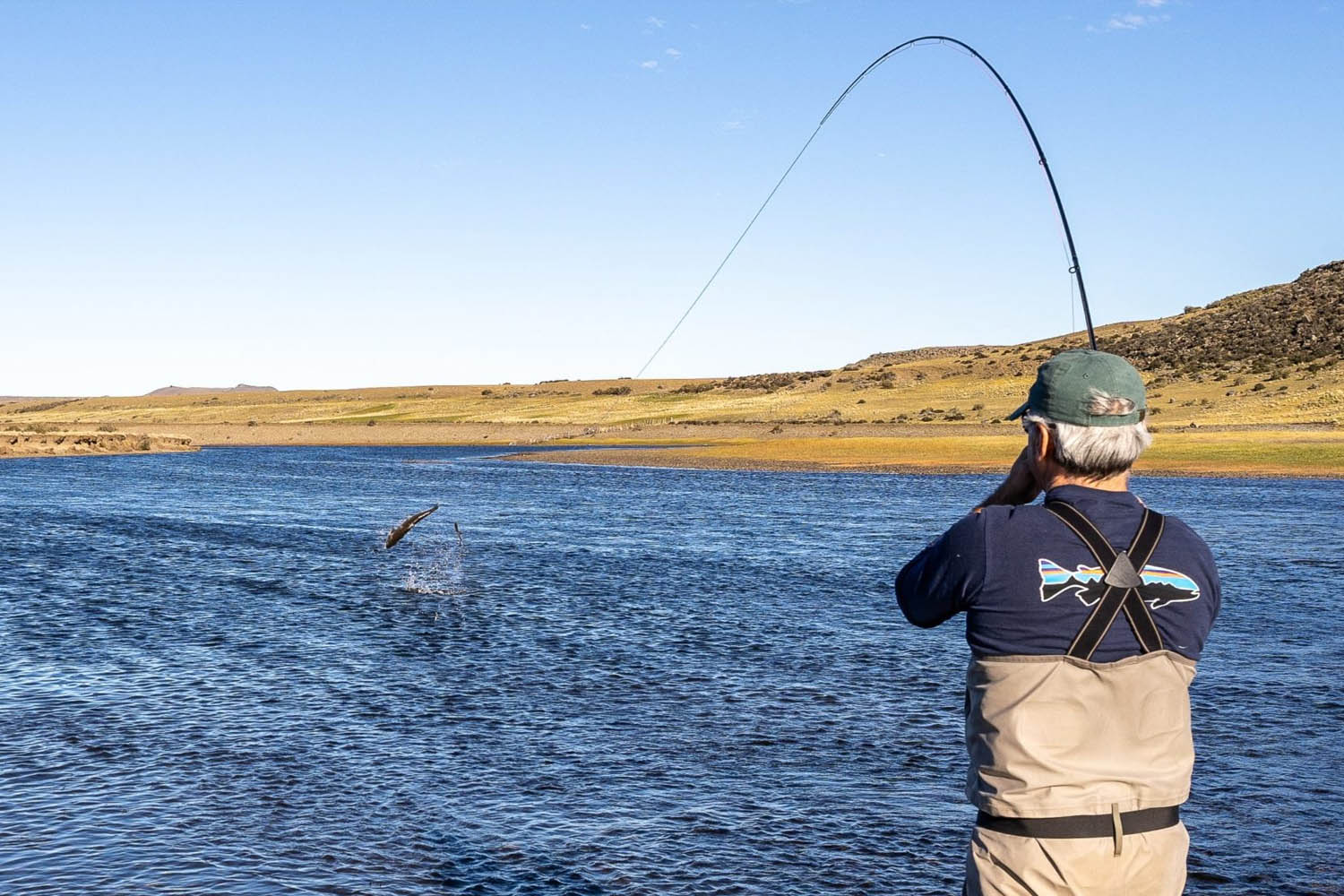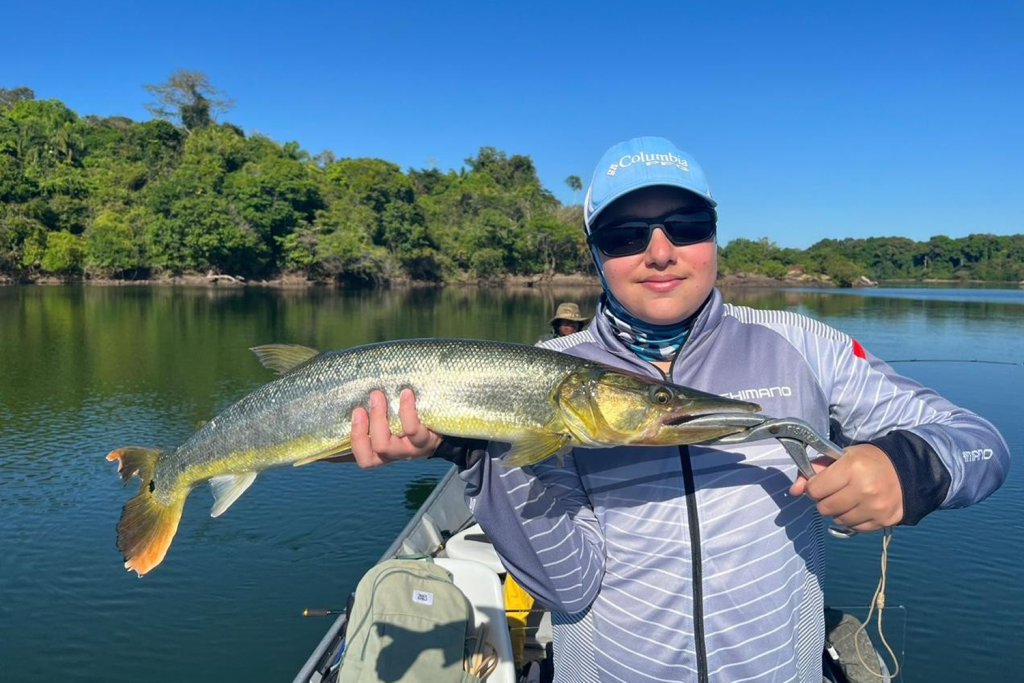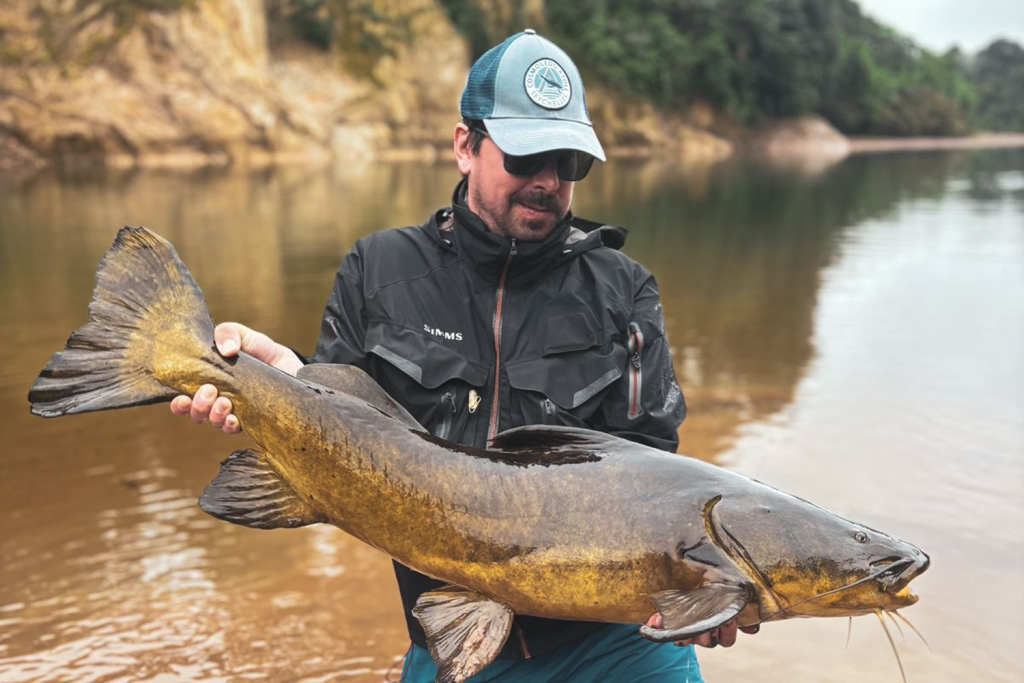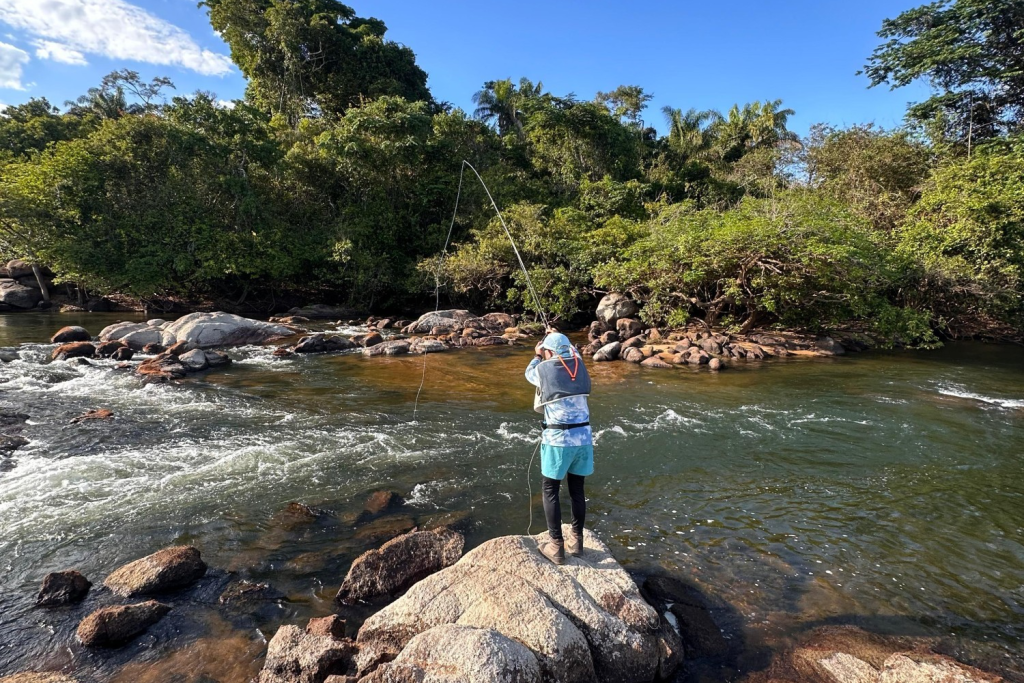It was a long time coming but in late December of 2021 we were finally able to open the doors to Las Buitreras again. In the greater scheme of things, being away for 21 months may not seem like a big deal but coming back to the estancia and seeing all our friends was emotional. After missing out on half of the 2020 season and all of 2021 it was simply amazing to be back. And the same was true for all our guests who were all so positive and happy to be able to travel again. I guess we all took it for granted and this lockdown really made us appreciate what we have down here and how fortunate we are to be able to travel and meet new and old friends from all corners of the globe.
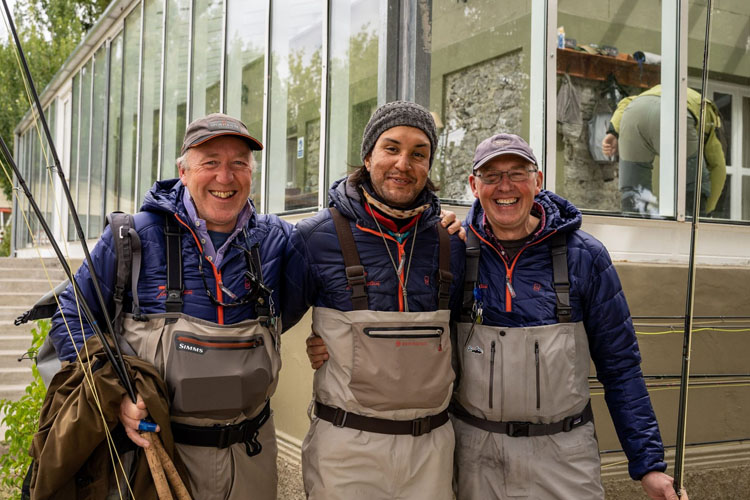

We came into the season with some concerns about how to manage the whole covid situation with people flying in from different corners of the world with governments changing the travel requirements almost on a daily basis. On top of that we had a whole book with rules and regulations on how to manage the operation passed down from higher authorities. However, as the season progressed we realized that most of you who visited us were not in the least concerned, but rather just happy to get away from all the madness and spend some time in this bubble we managed to create in Las Buitreras. Free from outside noise and the only thing on everyone’s mind was fishing, eating, drinking and having a good time with good people. As it should be.
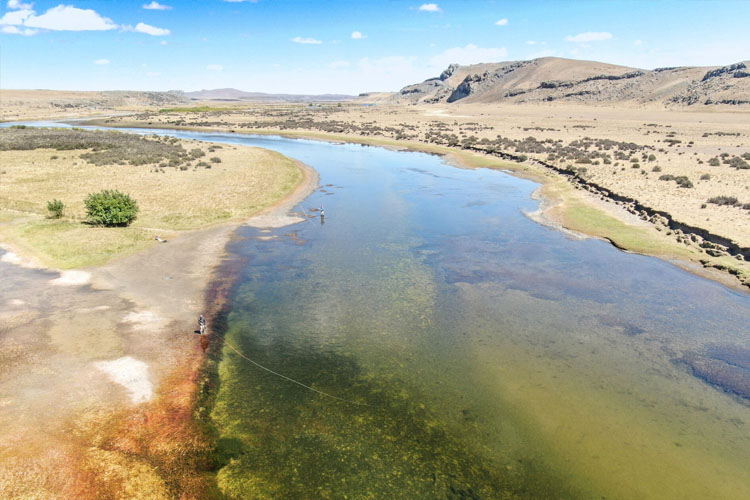

We had been receiving reports all through November and December about the river being low so we were curious to see how the river would treat us during the first couple weeks. We know from experience that as long as the water isn’t too hot, this river fishes really well on low water so we were hopeful fishing would be good. It turned out we had nothing to worry about. Perhaps the unusually cold temperatures made up for the low water but fishing was incredible from day one and we saw more fish coming up the river than we have in a long time. The combination of low and clear water along with the use of drones obviously made it easier than ever to spot the fish but we were still stunned over the number of fish we could count. As a matter of fact, some pools were so full of fish that a few times we were looking at our drone footage, thinking we must be looking at some old footage from Greenland. We had guests filming school after school from the bridge with their phones, and we have footage of fish moving over shallow sections with their fins out of the water, reminding us of a school of Bonefish rather than seatrout. Quite amazing to say the least and a great reminder that even though the fish don’t always bite, they are often there, observing your fly. Make sure to follow us on Instagram and Facebook for some of the footage described above as we will be posting some interesting videos during the summer.
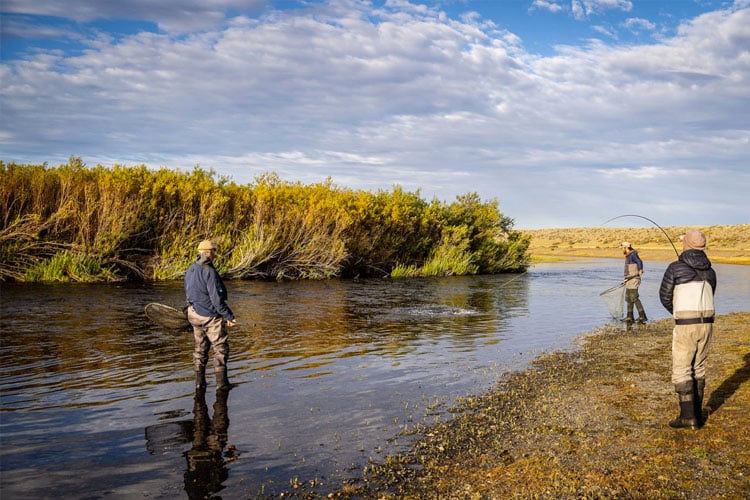

In terms of fishing, January due to the low and clear water was all about small nymphs during the day, and as soon as we hit that magic hour when the light starts to disappear we switched to the traditional Sunray Shadows and leeches. A recipe that just works. Low and clear water obviously puts a little more pressure on how you as an angler act on the river. Wading needs to be gentle and the same goes for casting and presenting your fly. Oftentimes it’s preferred to stay out of the water altogether just to avoid spooking the fish, pushing them away from where you can cover the water. We often see fish being hooked really close to the bank from where we fish when we avoid wading and take a stealthy approach from when we arrive at the pool. One good example of this was when Justin spotted a school of around 40-50 fish slowly moving up the river between flats and lightweight in Zone 3. By switching out his spey rod for a 7 weight single hander, avoiding wading and splashing the line in the water altogether, managed to hook a perfect, super fresh 15 pounder that took him almost all the way down to heavyweight before he could land it. It’s a bit of a dreamy moment when you are able to see and hunt these seatrouts with a single hander, knowing you get that one shot or you’re likely to spook the whole school.
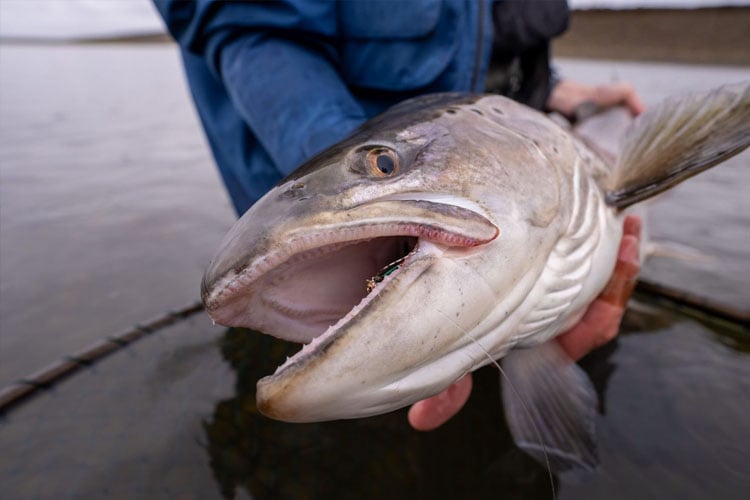

Another standout moment for us in January was perhaps when David, who’s been coming here for a few years now, was inches away from landing the fish of a lifetime in Turning Bank. After doing everything right, all the way from casting, covering the water, setting the hook, letting the fish run, come back upstream, go back down again, always keeping perfect tension, an absolute beast of a fish came all the way into the weeds at the deep hole at the bottom of the pool. When Lawson finally saw the fish up close, net in hand, he almost couldn’t swallow for a few seconds as it reminded him of the fish he saw being lost in C pool in 2020 read that report here. Unfortunately history would repeat itself and the fish had one more push in it, managed to get out of reach from the net, and pop, the fly came off. David, visibly shaking, calmed his nerves with a cigarette while Lawson took a lap around the car to get his composure back. This was again one of those unicorns that we hook a few times per season but so rarely manage to get in the net. It’s obviously a great motivator to know that those monsters that make a 20 lb fish pale in comparison are out there but it certainly wouldn’t hurt to land a few more. Perhaps we have to add an extra netter on a full time basis next season.
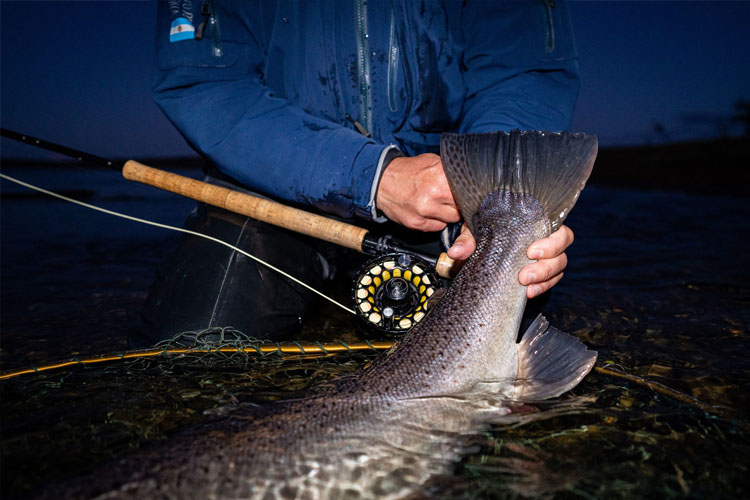

February saw very similar conditions although the weather started getting a little warmer. Water remained low but we kept getting these small pushes of water from the mountains, keeping the water level in good shape without making the river dirty. Instead we tended to get a perfect tea color water after each push which is what most of us call perfect water color for this river. There were a few occasions when we had some bigger pushes of water coming down, muddying the water for a couple hours, forcing us to fish bigger, colorful flies, like yellow yummies and chartreuse streamers. When we did though it seemed to work very well and we caught plenty of fish right after a rise when the water was still very muddy. In general fishing and catch rates remained stable and we kept to fishing small nymphs for the most part.
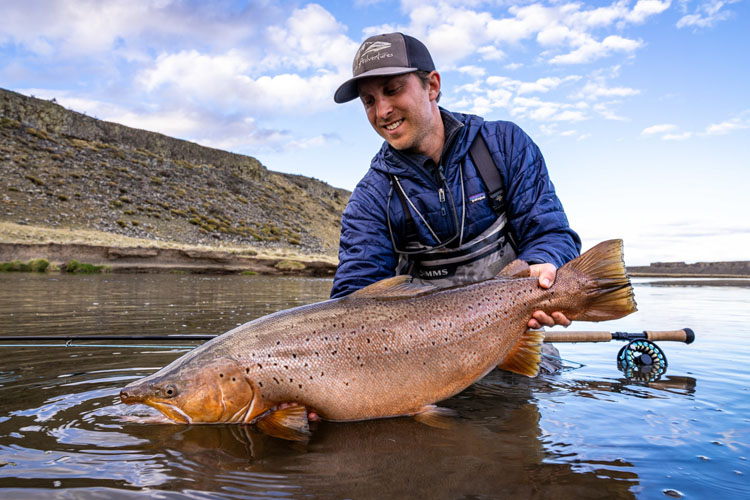

The biggest revelation or aha moment of the season came one early afternoon session in March. Fishing Crillo’s pool under a blazing sun and with no wind whatsoever, we started seeing fish following the fly, fins above the water creating serious bow waves in the water. However, they would not bite. After trying everything from super small nymphs and extra long leaders, to streamers, to stripping flies, to swinging, yeah even dries, someone decided to tie on the biggest sunray they had in their box. Again a big fish started following the fly, fins out of the water like a shark, but this time there was no hesitation once it caught up to the fly. “SCHMACK” and straight up in the air. This was the beginning of some amazon sessions and something that changed the way we approached the river during certain conditions for the rest of the season. For specific stories about some insane sessions with Sunray Shadows we recommend reading week report 10 and week report 12 from this season where we had some guests experiencing rather spectacular sessions and entire weeks.
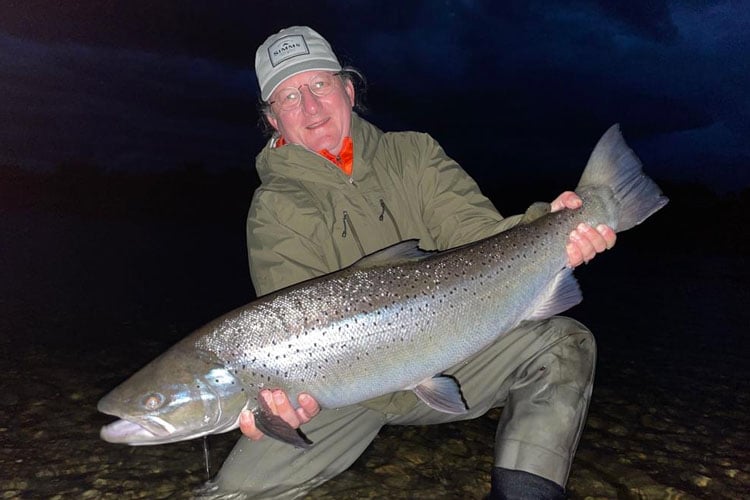

Long time friends and Las Buitreras visitors Sven and Toni from Germany had decided to make up for lost time and stayed with us for 3 full weeks from late February and well into March. Due to their extended trip they really got to taste the full range of what fishing Las Buitreras has to offer, including a short visit to our new program Glencross. As we often say, if you’re fortunate enough to be able to stay for more than a week, those extra days seem to make people relax way more with their fishing and truly enjoy every session. Consequently, this usually leads to even better results from day one. For Toni, this could not be more true as he started racking up dream fish after dream fish as soon as he stepped into the water. Always relaxed and always positive, Toni hit a streak we’ve rarely experienced from one angler before. By day four of his first week, every other angler would come back to the lodge and the first thing they would ask: “how big did Tony get”. And most times they would get an answer that made them shake their heads and just sit down. For Tony though, after racking up fish in the 15-21 lb range almost daily, the stories that stuck with him were two fish that he lost. One that came flying out of the water at the bottom of Turning Bank, right in front of our guide Charly who grew up fishing this river and has a lifetime of experience from here. Charly claimed with as much certainty as one can without actually measuring or weighing a fish, that it was the biggest fish he has ever seen in this river, well over a meter. The other one that got stuck in Toni’s head was a fish lost in La Recta. Again, how big it was we’ll never know but we’re sure we’ll keep hearing the story about it.
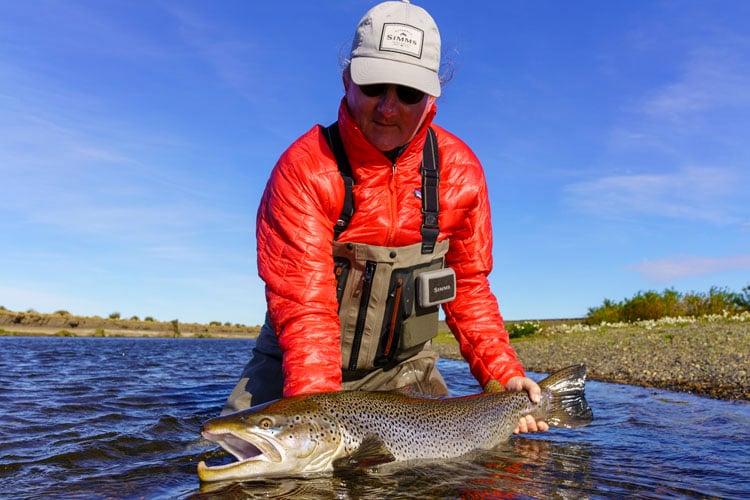

Appropriately, Toni’s friend and fishing partner for all of the three weeks, Sven, had one of his most memorable moments in that same pool, La Recta. On a day with really strong winds from what we call the wrong side, meaning Zone 2 and 3 are almost impossible to fish from the preferred side, Sven waded out in the waves from the other side of La Recta, tied a big Sunray Shadow on, and with the wind in his back made a first, shorter cast, just to cover the channel right in front of his feet. Kabaam, and his Sunray came flying straight up in the air, connected to a 20 lb plus, colored seatrout. After a nerve-wrecking fight that had Sven thrown back and forth between hope and despair, he was able to land a beautiful 21 lb hen fish.
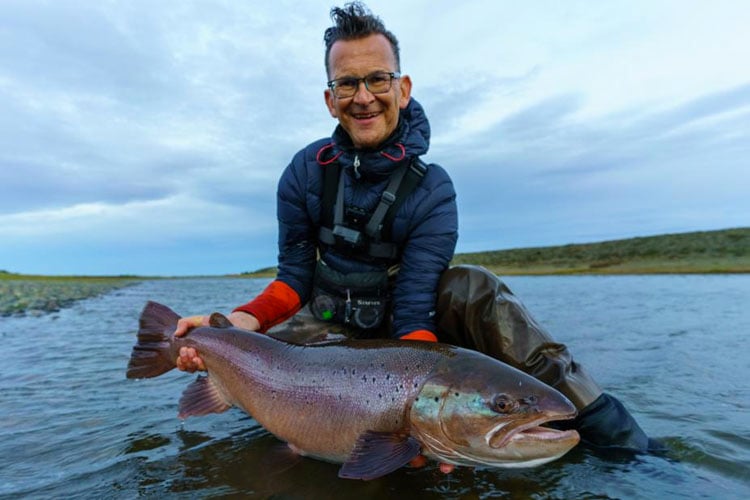

From mid March the water level increased a bit and for the most part we had great levels with a perfect tea color. With these conditions we started fishing slightly bigger flies which worked very well. When you’re fishing for seatrout in the 20 lb plus range it just gives you that extra confidence fishing a slightly bigger hook. Along with that we had constant runs of fish coming up the river. Although we obviously catch more colored fish the deeper into the season we get, we still had several weeks in late March and all the way through our last week in April where we caught more chromers than colored fish. This is something most people don’t seem to be aware of but it is quite normal as we have new fish coming up the system all through April.
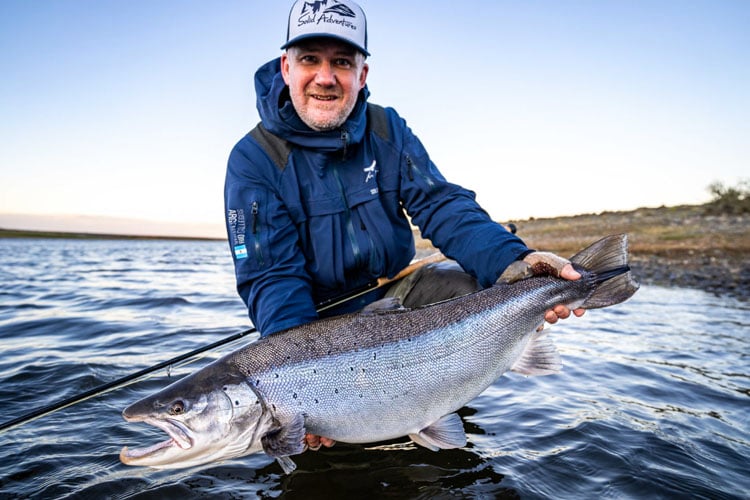

One of the most talked about non-fishing related events throughout the season was the regular Puma sightings we had. The first confirmed sighting happened in week 5 when a group of Swedish anglers guided by Carlos came across a Puma crossing the river right above the pool called Loop hole. We had a few guests claiming they’ve seen a Puma earlier in the season but it was mostly laughed at by their friends, saying it must have been a fox or something. So once we had this close encounter the tone changed a bit. We ended up having several more sightings, several captured on video and photo. The most spectacular encounter came late March when Carlos, Rick and Felix came across a Puma sitting on a fresh kill right where you cross the small bridge between La Curva and Wagon Wheel in upper Zone 1. After a short stalking match, they managed to get some good photos and left the Puma alone to finish its dinner.
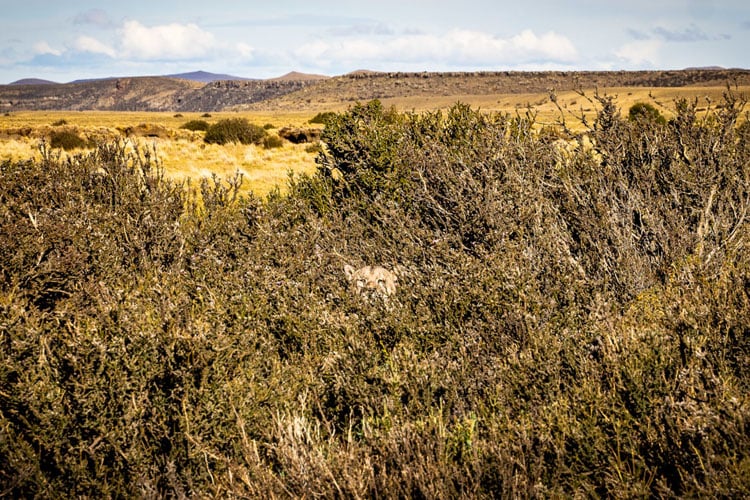

Over the years we have been very excited to see more and more women visiting us. This year was no exception. To mention a few Sonya was back, and being her usual self outfished everyone in the lodge. Annacarin, was here a few times during the season and seems to find a trophy almost every session. Susan, a new acquaintance for us this season, was here for her first ever spey fishing experience. She was not only one of the most positive and passionate fly anglers we have ever met, but she was also one of the most dedicated, constantly asking on what to change and improve with her casting. It didn’t take her long before she was covering water really well and eventually landing her first ever Argentinian seartrout. Mary, here the same week as Susan, was another positive spirit who not only landed her first Argentinian seatrout, but was a joy to have in the lodge. Another first time Spey angler was Nina, who visited us in April. And just like Susan and quite frankly most women we’ve had the pleasure of guiding here, picked up this fishing in no time. Amanda was here for her third time and her improvement from her first year is just mind boggling. Keep it up Amanda and Marco may ask for another fishing partner in the future. Do we dare mention Glenda? 20 landed in one week, all on the same Sunray Shadow. We’ll just leave it at that.
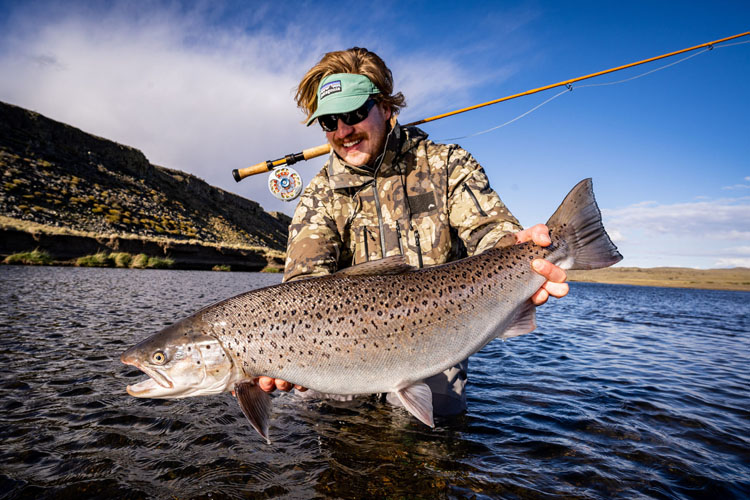

Another interesting note from the season was that many of our first time visitors, most of whom were also very new to spey fishing, did incredibly well. It usually takes some time to get used to the way we fish here and how we approach the river but this season everyone was very good at adapting and were for the most part richly rewarded.
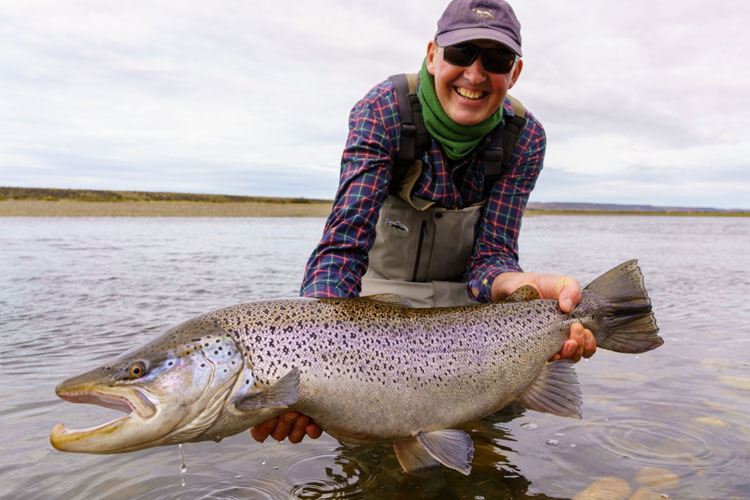

Just to mention a few we had Austin Kane from Atlanta, perhaps the most stoked guest of the season. Refusing to give in to the temptations of just grabbing his all too familiar single hander, Austin stayed with his Spey rod for the entire trip and made great progress. Towards the end of the trip you’d think he had been spey casting his whole life. We also had Dr. Michael from Germany, and Peter from the UK, both here for the first time and they were money from their first session. Peter is an experienced and skilled salmon angler so no one was that surprised when he started racking up fish. As a true gentleman he kept a very quiet profile about his catch rates but as soon as he hit the water he was a machine. For Dr. Michael this was a completely new experience. Given this was his first time spey fishing he wasn’t expecting to catch a whole lot of fish but was super excited about the experience of being in Southern Patagonia and fly fishing. To make sure to get the most out of his trip he arrived mid week along with Peter to start their trip with three days fishing in Zone Zero before entering the main beats of Las Buitreras the following week. Perhaps due to his extremely humble approach, perhaps due to his meticulous and factual way of asking questions and then repeating each moment of the cast to himself step by step as soon as he hit the water (let’s remember this is a German doctor we are talking about), or most likely a bit of both, Dr. Michael couldn’t do one thing wrong the first couple days. Session after session he came back to the lodge with a subdued smile on his face. Not wanting to be impolite or upset any of the more experienced anglers in the group in case they hadn’t caught any fish, he just sat down and did his thing until asked how the session was. “Oh you know, it’s so crazy because I don’t know what I do, but I caught another fish, a big one! I don’t know how”, was the answer we’d get almost every day. To see his progress in casting and how to approach the water day by day was amazing and we are excited to see what next season has on offer for you Michael.
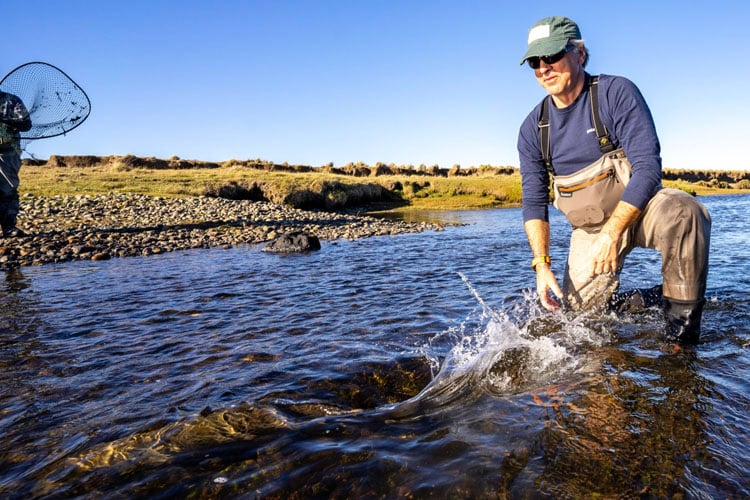

Summary and some stats
In short we had a great season with really good fishing from start to finish. There are always a couple days here and there during the season when fishing slows down for some reason but this season it always picked right back up after a short slump. We saw numbers of fish we have rarely, if ever during our 20 seasons, seen before. Water levels were low in January and February but fishing was good due to the huge amount of fish coming up the river. During the later half of the season we had slightly higher water, closer to what we call zero, or normal, with a great tea color. Fishing remained very good all through the last week with plenty of fresh fish still coming up the river.
The week with the highest average weight of landed fish, note, landed, was Week 1 with an average weight of 10,6 lbs.
The week with the most fish landed was week 12, with over 130 seatrout landed between 10 rods.
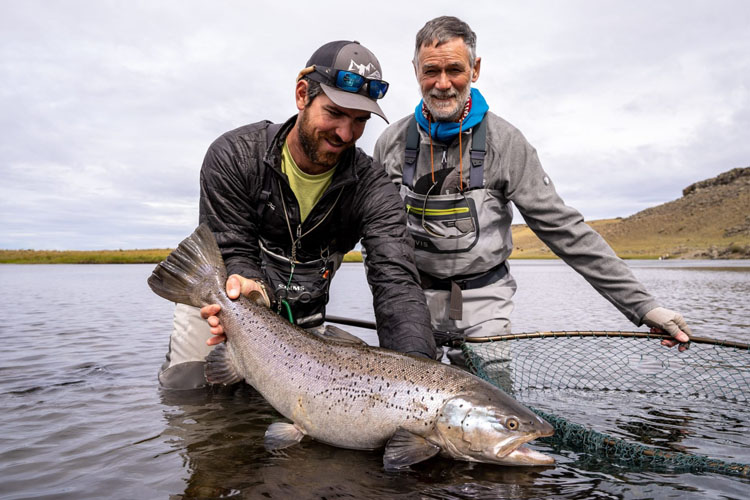

Biggest fish landed this season came in week 6 and was a 23 lb cock fish from Cantera. It took a size 8 Copper John and was landed by John from the UK.
Comeback pool of the year: La Curva. If there is ever such a thing as a fish guarantee it was definitely at the hot spot of La Curva this season.
Big fish pool of the year: Turning Bank. Even though we didn’t land the biggest fish of the season in this pool, we lost some absolute monsters, well over 1 meter, here. This pool was tricky to fish during some of the weeks with really low water but as soon as it was fishable it was deadly.
We had some truly amazing anglers visiting us, we had complete beginners visiting us, and everything in between. But most importantly, the common denominator was that every single person that came down here was so positive and helped make this one of the best seasons ever. We cannot thank you all enough and hope to see you again in the future.
CONTACT US
Our fly fishing specialist Peter Collingsworth has been over to Las Buitreras, fishing the banks of the famous Rio Gallegos many times, so if there’s anything you would like to know about the fishing or if you have any questions you’d like to ask him, you can contact him on 01603 407596 or email at peter@sportquestholidays.com he would be delighted to speak to you.
